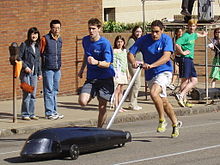
Carnegie Mellon University (CMU) is a private research university in Pittsburgh, Pennsylvania. The institution was established in 1900 by Andrew Carnegie as the Carnegie Technical Schools. In 1912, it became the Carnegie Institute of Technology and began granting four-year degrees. In 1967, it became Carnegie Mellon University through its merger with the Mellon Institute of Industrial Research, founded in 1913 by Andrew Mellon and Richard B. Mellon and formerly a part of the University of Pittsburgh.

The Heinz College of Information Systems and Public Policy, also known as Heinz College, is the public policy and information college of Carnegie Mellon University in Pittsburgh, Pennsylvania. It consists of the School of Information Systems and Management and the School of Public Policy and Management. The college is named after CMU's former instructor and the later U.S. Senator John Heinz from Pennsylvania.
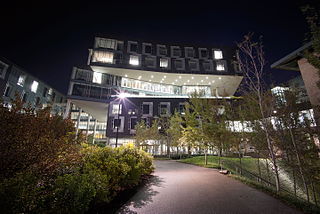
The School of Computer Science (SCS) at Carnegie Mellon University in Pittsburgh, Pennsylvania, US is a school for computer science established in 1988. It has been consistently ranked among the top computer science programs over the decades. As of 2022 U.S. News & World Report ranks the graduate program as tied for second with Stanford University and University of California, Berkeley. It is ranked second in the United States on Computer Science Open Rankings, which combines scores from multiple independent rankings.

Schenley Park is a large municipal park in Pittsburgh, Pennsylvania, United States. It is located between the neighborhoods of Oakland, Greenfield, and Squirrel Hill. It is also listed on the National Register of Historic Places as a historic district. In 2011, the park was named one of "America's Coolest City Parks" by Travel + Leisure.
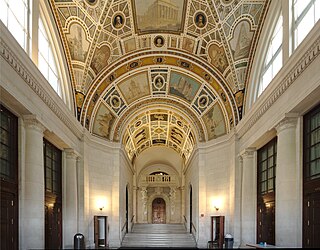
The College of Fine Arts (CFA) at Carnegie Mellon University in Pittsburgh, in the U.S. state of Pennsylvania oversees the Schools of Architecture, Art, Design, Drama, and Music along with its associated centers, studios, and galleries.
The Marianna Brown Dietrich College of Humanities and Social Sciences is the liberal and professional studies college and the second-largest academic unit by enrollment at Carnegie Mellon University in Pittsburgh, Pennsylvania, USA. The college emphasizes study through rigorous analysis and technology of the behaviors, institutions, and beliefs that constitute the human experience, describing itself as “not an ordinary liberal arts school.” The college was named for Marianna Brown Dietrich, the mother of philanthropist William S. Dietrich II, after his donation of $265 million to the university in 2011 – the largest single donation in Carnegie Mellon history.

Carnegie Mellon Silicon Valley is a degree-granting branch campus of Carnegie Mellon University located in the heart of Silicon Valley in Mountain View, California. It was established in 2002 at the NASA Ames Research Center in Moffett Field.

Mark A. Nordenberg is the chancellor emeritus of the University of Pittsburgh and chair of the university's Institute of Politics. A professor of law and university administrator, Nordenberg served as the seventeenth Chancellor of the University of Pittsburgh from 1996 to 2014. Nordenberg served as the Dean of the University of Pittsburgh School of Law between 1985 and 1993 and other various administrative positions before becoming interim Chancellor of the University of Pittsburgh in 1995, a position which became permanent the following year. He became known as Nordy to many Pitt students, who voted to name a recreation center and arcade in the William Pitt Union as Nordy's Place, and is also the namesake of the university's endowed Nordenberg Scholarships and the Nordenberg Hall dormitory on the university's campus.

Scotch'n'Soda is a student-run theatre organization that resides on the campus of Carnegie Mellon University. Its initial dedication was the creation and production of original musicals, but has now taken to performing both professionally published and student-written materials. Students are welcome to write, compose, design, direct, perform in, and otherwise become involved with every aspect of each production. The organization is open to all Carnegie Mellon students from all backgrounds who are interested, and all performances are public with varying ticket prices.
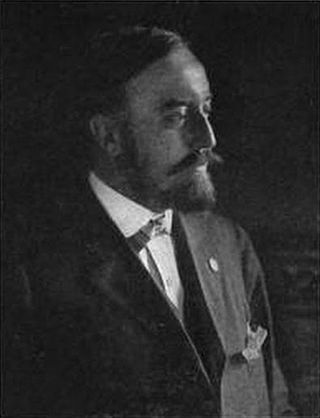
Henry Hornbostel was an American architect and educator. Hornbostel designed more than 225 buildings, bridges, and monuments in the United States. Twenty-two of his designs are listed on the National Register of Historic Places, including the Oakland City Hall in Oakland, California and the Soldiers and Sailors Memorial Hall and Museum and University Club in Pittsburgh, Pennsylvania.
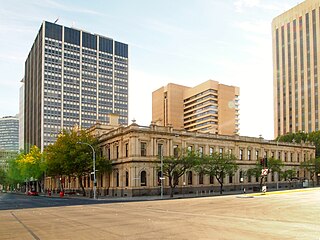
Carnegie Mellon University in Australia was the Australian campus of Carnegie Mellon University's H. John Heinz III College from 2006 in the city centre of Adelaide, South Australia. In June 2022 the operation announced it would close down. Current students will graduate but no new students would be admitted. From 2006 to 2022, over 1200 students completed degrees there.

The School of Design at Carnegie Mellon University is a degree-granting institution within a private university in Pittsburgh, Pennsylvania, United States. The School of Design is one of five schools within the Carnegie Mellon College of Fine Arts offering both under and post graduate education. The School is accredited by Middle States Association of Colleges and Schools and awards BDES, MA, MDES, MPS, MII-PS, DDES, and PhD degrees. The School of Design has 21 full-time and 10 adjunct faculty.

"There Goes Old Georgetown" is the unofficial name of the Georgetown University sports teams' fight song. It is also known as simply "Georgetown Fight Song". It is actually an amalgamation of three songs, only the oldest of which, 1913's "The Touchdown Song", contains the lyric "here goes old Georgetown". Onto a version of this was added "Cheer for Victory", written in 1915, and "The Hoya Song", written in 1930, both of which are included in their entirety. The authors of these songs, and of the combined version, are unknown. Although some effort has been taken to change the song, no serious proposal has come forth.

The Miller ICA at Carnegie Mellon University is the contemporary art gallery of Carnegie Mellon University in Pittsburgh, Pennsylvania.

Subra Suresh is an Indian-born American engineer, materials scientist, and academic leader. He is currently Professor at Large at Brown University and Vannevar Bush Professor of Engineering Emeritus at the Massachusetts Institute of Technology (MIT). He was Dean of the School of Engineering at MIT from 2007 to 2010 before being appointed as Director of the National Science Foundation (NSF) by Barack Obama, where he served from 2010 to 2013. He was the president of Carnegie Mellon University (CMU) from 2013 to 2017. Between 2018 and 2022, he was the fourth President of Singapore's Nanyang Technological University (NTU), where he was also the inaugural Distinguished University Professor.
The traditions of Washington & Jefferson College are a key aspect of the culture of Washington & Jefferson College. One of the oldest traditions at Washington & Jefferson College were the "Freshman Rules", a system of rules and restrictions on freshmen. Failure by freshmen to follow these rules would subject them to beatings by upperclassmen or other punishments doled out by the "Freshman Court". During the 1870s and 1880s, the students engaged in organized athletic competitions, pitting the freshman versus sophomore classes in the "Olympic Games" that involved elaborate opening ceremonies and the smoking of a Pipe of Peace." Another form of physical contest between the freshman and sophomore classes were the annual "color rush," where the teams fought over control over strips of fabric, the "pole rush," where the teams battled to raise a flag up a flagpole, and the "cane rush" where the teams fought over control over a ceremonial cane. These contests generally devolved into outright gang violence.
The Tepper School of Business is the business school of Carnegie Mellon University. It is located in the university's 140-acre (0.57 km2) campus in Pittsburgh, Pennsylvania.

Steven Irwin Klepper was an American economics professor, researcher and author. Klepper was the Arthur Arton Hamerschlag Professor of Economics and Social Science at Carnegie Mellon University (CMU) in Pittsburgh, Pennsylvania. He was recognized for his teaching and research related to the integration of traditional economic models with evolutionary theory, and finding connections between the study of entrepreneurship and mainstream economics. In 2011, he was the recipient of the Global Award for Entrepreneurship Research. Klepper authored more than 100 peer reviewed articles generating more than 10,000 citations. He is listed in the top five percent of most influential economist authors in the world according to IDEAS/RePEc.

Farnam Jahanian is an Iranian-American computer scientist, entrepreneur, and academic. He serves as the 10th president of Carnegie Mellon University.

Carnegie Mellon University Africa, in Kigali, Rwanda, is a global location of Carnegie Mellon University. CMU-Africa offers master's degrees in Information Technology, Electrical and Computer Engineering, and Engineering Artificial Intelligence. CMU-Africa is part of the Carnegie Mellon College of Engineering. The College of Engineering is top-ranked. In U.S. News & World Report's 2024 graduate rankings, the College of Engineering was ranked #5.


